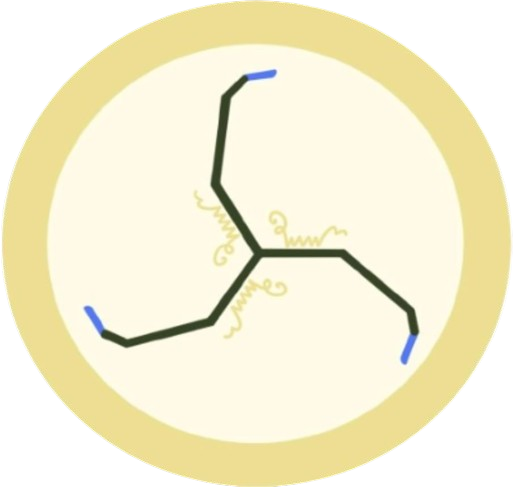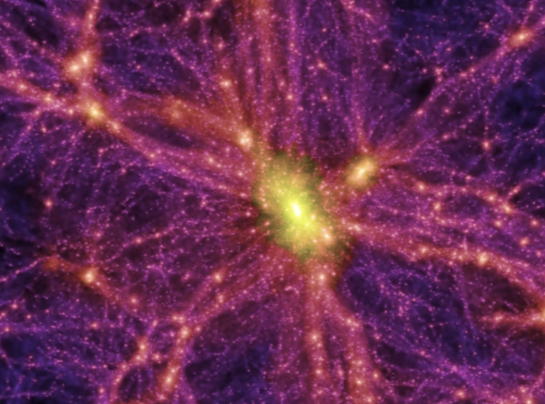Dark matter
Dark matter is one of the mysteries of the cosmic world which scientists have little knowledge of. In some theories, it is described as an exotic particle that doesn’t interact with normal matter. Some discoveries related to dark matter indicate that it constitutes a large percentage of the universe: approximately 23%. In contrast, baryonic matter consists of about 5%, and the rest is dark energy. Dark matter is invisible, and scientists consider it responsible for galaxies moving farther apart.
In this article, we will discuss some ongoing research on dark matter, its significance in cosmology, and the latest approaches to detect it.
Research
Future Particle Collider (FPC): Currently, CERN ( Conseil européen pour la Recherche Nucléaire’ or European Council for Nuclear Research ) operates the world’s largest particle collider, the Large Hadron Collider (LHC). As the LHC is expected to end its operational term around 2040, CERN is planning to build a new particle collider that could significantly advance our understanding of dark matter. The planning for this future collider is expected to be finalized by 2025. This new collider will incorporate advanced technologies such as cryogenic superconducting materials and vacuum technology, which could greatly enhance the study of dark matter.
Significance in cosmology
Current researchers hypothesise that dark matter is responsible for many gravitational effects observed in the universe. For example, scientists initially assumed that stars at the edges of spinning spiral galaxies should travel much slower than those at the centre. However, observations have shown that stars orbit at nearly the same velocity regardless of their location. This phenomenon suggests the presence of an unseen force influencing the stars, which is attributed to dark matter.
In cosmology, the concept of dark matter is crucial as it helps explain the gravitational effects on galaxies and stars. It also aids in understanding the optical illusions astronomers observe in the deep universe. Furthermore, dark matter plays a vital role in explaining the birth and evolution of the universe.
Many scientists argue that this concept could be more clearly understood if we modify our fundamental theory of gravity. They suggest that gravity may take different forms and that, on a large scale, it differs significantly from the gravity we experience on Earth.
Methods used in detecting dark matter
Particle Accelerator Detection Method: This method uses a particle accelerator or collider to reproduce dark matter. It has already confirmed the existence of the Higgs boson. Since dark matter interacts weakly, its presence can be inferred in a collider, if the event shows missing energy or momentum. If the energy loss cannot be accounted for by any standard model particles, it would be reasonable to conclude that it escaped as dark matter.
Scintillating Targets: In this method, a certain material is struck to emit photons. The strength of the emitted photons depends on the scattering particle and the material used. The parameters are noted and analyzed to learn about the scattering particle. This method is one of the latest, has less background noise compared to others, and is highly sensitive.
- Suhani Kashyap
Glossary:
- Higgs particle — The Higgs boson is the fundamental force-carrying particle of the Higgs field, which is responsible for granting fundamental particles their mass.
- Particle collider — The device in which two beams of particles moving in opposite directions are made to collide.
- Spinning spiral galaxy — A spiral galaxy typically has a rotating disc with spiral ‘arms’ that curve out from a dense central region. The Milky Way is a spiral galaxy.
- Baryonic matter — Matter composed of protons, neutrons and all the objects composed of them (i.e. atomic nuclei), but excludes things such as electrons.
Sources:
- https://www.nationalgeographic.com/science/article/dark-matter
- https://science.howstuffworks.com/dictionary/astronomy-terms/dark-matter.htm
- https://www.space.com/large-hadron-collider-dark-matter-particle-jets
- https://www.euronews.com/next/2024/02/06/european-scientists-reveal-plans-for-next-generation-particle-collider-to-study-dark-matte
- https://drive.google.com/file/d/1J6TMD7qI7b11PGB7_0xAmsrCRTP9BGOC/view?usp=drivesdk
Disclaimer: This article has also been posted to our Medium. NernstNaK is the rightful owner of this work on both our website and Medium, and thus stresses that there has been no plagiarism or copying on either account.*

